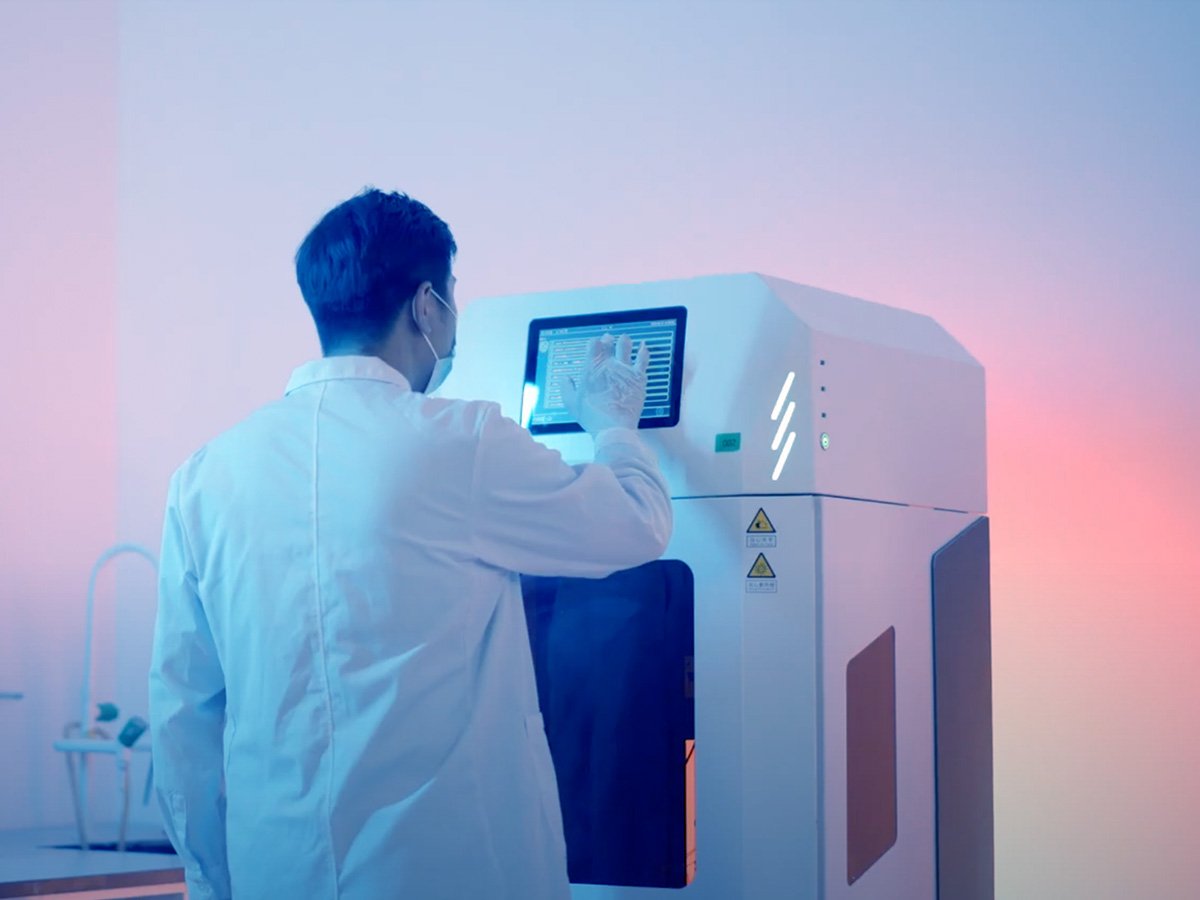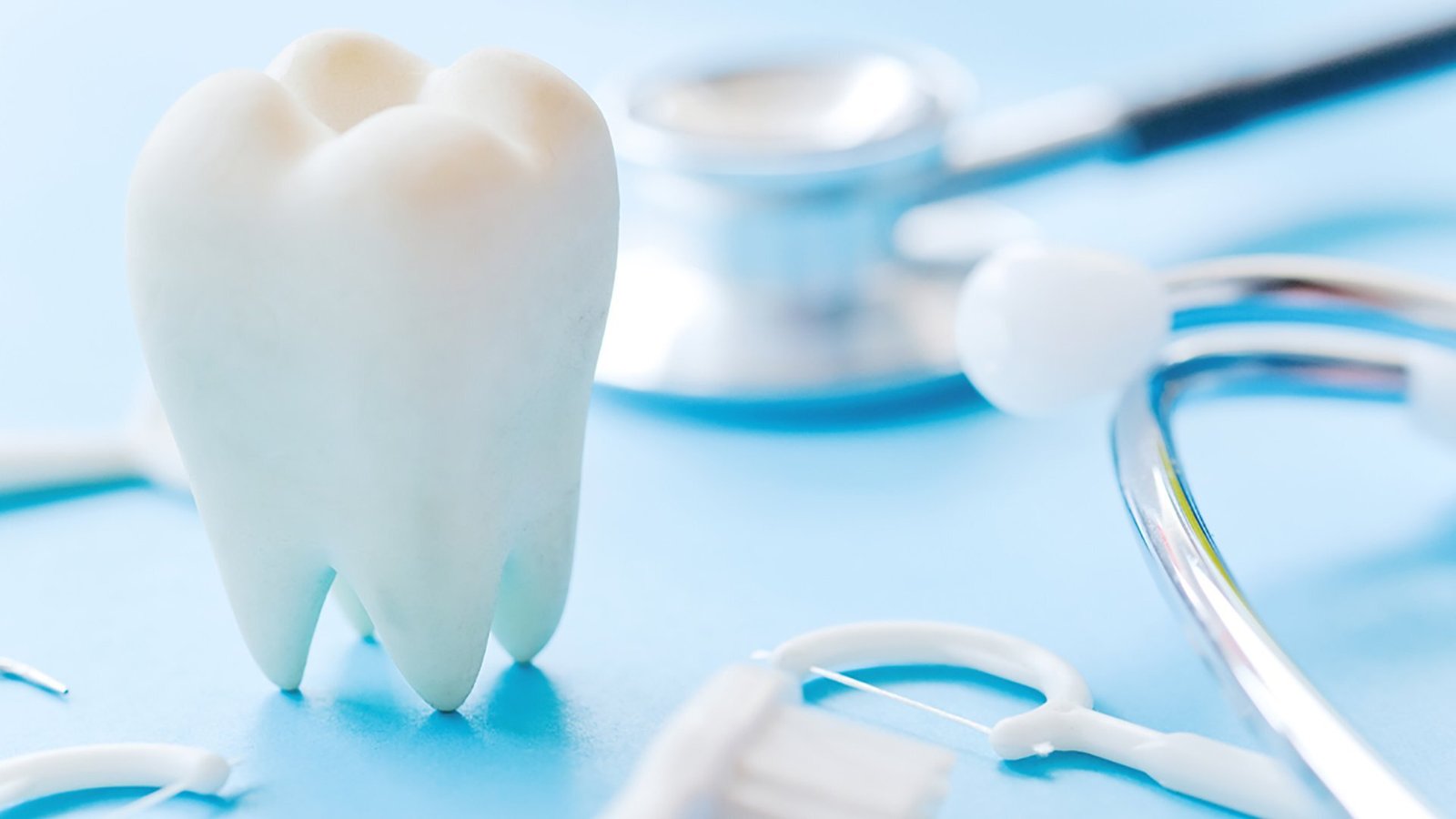The right tools and techniques can make all the difference between a flawed finish and one that looks fabulous on zirconia restorations. Zirconia is a popular dental material because of its durability and aesthetics; however, performing systematic zirconia polishing techniques is required to fully utilize the benefits of zirconia. The correct zirconia polishing steps improve its mechanical and esthetic characteristics. Aidite zirconia is globally trusted by professionals for its high-quality zirconia, delivering better strength and aesthetics. If you are a dental technician or a clinician, learning how to polish zirconia can significantly enhance the quality and durability of your dental preparations.
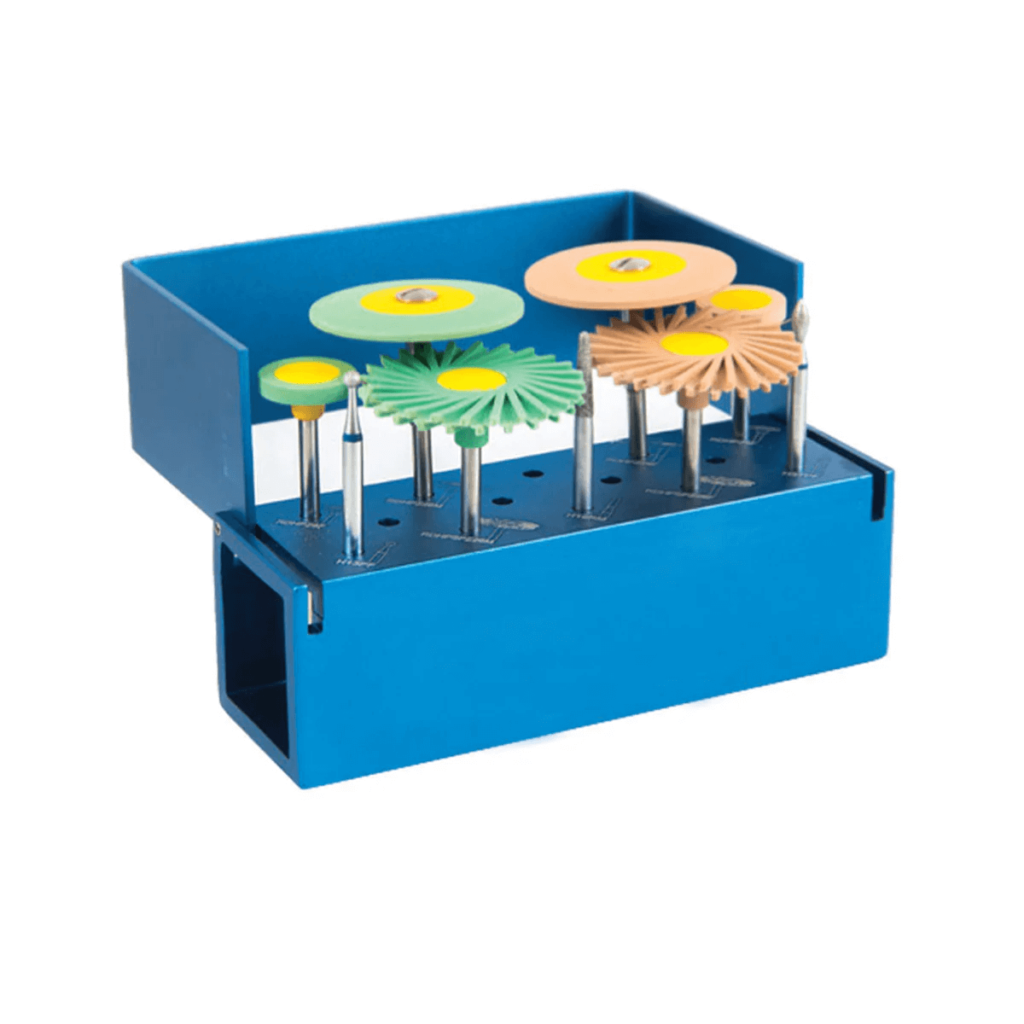
What is Zirconia and Why Polish Zirconia?
Zirconia, a material with great strength and biocompatibility, that has long been employed in dental prosthetics. However, a coarse surface can trap plaque and not be a good look. Knowing how to polish zirconia crowns properly ensures smoothness, gloss, and durability.
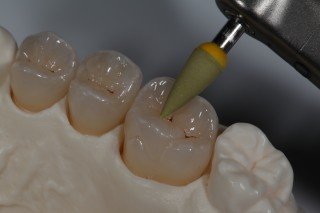
Why Polish Zirconia Crowns:
- Biocompatibility: Zirconia is already highly biocompatible with gum tissue, but a smooth, polished surface reduces irritation and improves true integration with the body.
- Plague resistance: A smooth surface reduces the adhesion of bacteria, which helps to maintain poor oral hygiene and decrease the risk of inducing inflammation.
- Improved Esthetics: Glossy, semi-natural appearance visually resembles a tooth.
- Function: Good polish provides good occlusion and less wear on opposing teeth.
- Durability of Restorations: Properly polished zirconia is resistant to chipping and surface wear, which means longer-lasting restorations.
Zirconia Polishing Techniques for Optimal Results
Polishing Zirconia is one of zirconia’s best features, which also makes it more complicated to discover how to effectively master zirconia polishing techniques. The secret lies in fast polishing without the risk of overheating. If you plan to use diamond-impregnated rubber polishers on zirconia, be sure to use those made specifically for zirconia to avoid damaging the surface.
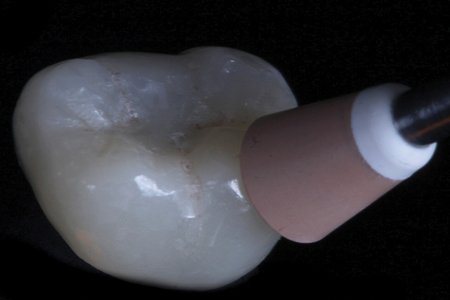
- Speed Control: Apply slow or medium speeds to avoid thermal overheating and microcracking.
- Use the Grits in Order: Start with the coarsest polishers and work your way to the finest for the most even wrapping.
- Use Good Pressure: It is best to use a minimal amount of pressure when using this, as this would improve the quality of polish and will protect and shine the surface underneath.
- Water Coolant: Use a water coolant while polishing to decrease the amount of heat accumulation and extend the lifespan of the polisher.
- Select Appropriate Instruments: Select instruments optimized for zirconia failure or even destruction may follow if the instruments are ineffective.
Contouring, pre-polishing, and high-gloss polishing are the three essential steps to master how to polish zirconia crowns. All four stages play a part in delivering both, a uniform and pleasing finish.
Step-by-Step Zirconia Polishing Guide
Zirconia polishing steps require great precision and repeatability. Each step aims to improve the quality of the restoration, both functionally and aesthetically, for long-term success.
This complete zirconia polishing guide takes you through the following main stages:
Step 1: Contour and Shape
Define restoration anatomy with medium-grit diamond burs.
- Start with contouring the occlusal and interproximal surfaces to create functional contours that match the bite of the patient.
- Make sure that the margins are smooth and crisp to ensure proper fitting.
- Restorations with natural teeth–similar morphology are more aesthetic and functional.
Step Two: Pre-Polish the Surface
Polish the surface using rubber polishers specific for zirconia.
- Smooth out any grooves, lines, or surface imperfections left over from contouring to provide a base on which you can begin sculpting.
- Keep the speed slow and apply gentle pressure to avoid overheating; this can alter the structure of zirconia.
- This step prepares for high-gloss polishing and is extremely important for learning how to polish zirconia properly.
Stage 3: Polish to High Gloss
Use finely gritted diamond polishers for shine and to bring on finish.
- Using a steady, circular motion or a buffer will give you an even, glassy shine.
- Do not apply too much pressure — you want the polisher to do the work.
- This step in any zirconia polishing guide is key and can affect how polished a surface will appear, but also can play a role in how plaque-free and lower wear opposing teeth.
Process Step 4: Inspect Under Magnification
Closely examine the polished surface for any imperfections.
- Check for residual scratches or rough areas that can affect the long-term durability.
- A loupe or microscope can help you find problem areas that cannot be seen by human eyes.
- This careful checking enables (and backs up) pro zirconia polishing techniques with an impressive degree of reproducibility.
Step 5: Final Rinse and Dry
Give the restoration a full clean before sending it out.
- Use a polishing paste container to rinse off the polishing paste, dirt and sludge from the restoration.
- To create a clean, contamination-free surface, dry the piece with oil-free air.
- The ultimatum in the entire zirconia polishing with polishing kit ensures that that the restoration is ready for the cementation or placement.
All zirconia polishing steps are confirmed not to damage the material and will stand the test of time for maintaining profiles and polishing. Polishing zirconia correctly to avoid microfractures and ensure adequate long-term performance
Tips to Perfect Your Zirconia Polishing Technique
Polishing zirconia is not just a few steps that you follow; it is a matter of fine details that you learn with time, getting your tools in the proper shape, and practicing again and again, sharpening your skills. Using these tips will make your polishing more effective and efficient.
Practice making perfect the world of zirconia polishing techniques. Keep these tips in mind:
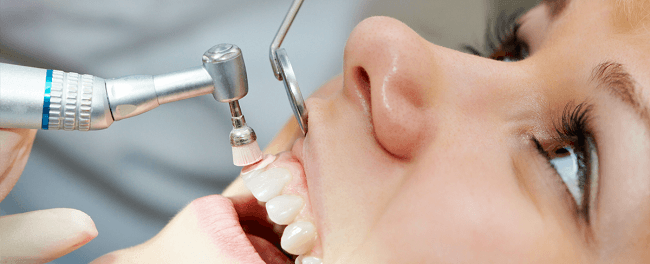
- Polish Gently and Slowly: Never be sudden or forceful with polishing strokes; keep that surface intact.
- Stay In Order: Use the recommended steps when polishing, in the order they are shown, and do not skip steps so that you get the same result each time.
- Use Magnification When Needed: A bit of polish with the magnification glass allows you to see fine scratches or uneven things. I hope the damage at the beginning of the work will be so that you can always start well.
- Store Tools Properly: You can extend the longevity and the performance of the polishers by keeping them clean and putting them in the right storage.
- Stay Updated on Products: Keep an eye out for newer products in the market that are more specific to zirconia to improve the polishing results.
Practicing how to polish zirconia, making your processes more efficient and results more aesthetic and predictable.
Common Mistakes to Avoid in Zirconia Polishing
Even experienced professionals can commit minor mistakes that impact the quality and longevity of zirconia restorations. Identifying these common errors and steering clear of them is pivotal to achieving consistently high-quality output.
Knowing how to polish zirconia is one part of the equation. Knowing how not to polish zirconia is equally important. Avoid these errors:
- Utilization of Appropriate Tools: Never utilize carbide or metallic polishers not suitable for zirconia, as it will spoil the surface.
- Applying Excessive Pressure: Too much force can create microcracks and weaken the restoration.
- Skipping Steps: Never skip a step during the polishing process, as it leads to bad surface quality and you lose aesthetics.
- Overheating the Material: Polishing without sufficient coolant can result in thermal shock and surface damage.
- Using Worn-out Polishers: Dull or worn-out tools can reduce polishing efficiency and destroy the surface
Proper polishing of zirconia enhances the results and reduces wastage of material.
Why Choose an Aidite Polishing Kit for Zirconia?
For consistent and quality results, professionals prefer zirconia polishing with a polishing kit. A kit often comes with different grit polishers that are made for different stages in the process. One of the best kits in the industry comes from Aidite, so you can expect a reliable fit for an efficient workflow.
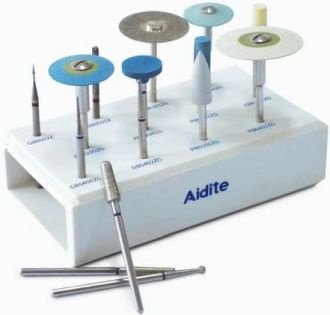
Key Features of Aidite’s Cameo Zirconia Polishing Kit:
- Multi-Grit System: The preparation of the kit enables the performance of all important zirconia polishing steps from the durable shaping up to the high-gloss finish, in both fine and coarse grits.
- Zirconia-Specific Design: Zirconia has a unique hardness and texture to it, and every tool is designed in a way to polish zirconia without causing microfractures or excess wear, with the operator knowing how to polish zirconia crowns.
- Durable and Long-Lasting: Dimensionally stable, they do not lose their shape or effectiveness and thus are economical in use, stable in build, and long-lasting, which is just because of the high-quality materials used to make polishers.
- User-Friendly Layout: The arrangement of Zirconia polishing with polishing kit helps users understand each step of the Zirconia polishing guide, helping them complete it without skipping any important steps. Organized clearly for all stages of high polish to make it easy to follow a structured guide to polishing Zirconia.
Check out the cameo zirconia polishing kit from Aidite so you can finish with confidence and correct precision. Gives you a successful procedural flow intended and designed specifically for you to learn how to polish zirconia crowns, keeping in mind structure and shine all at once.
FAQs
Q1. Why is it important to polish the zirconia restorations?
Polishing zirconia can prevent its surface from becoming rough and help in decreasing the accumulation of plaque and reduce wear to opposing teeth. This also contributes to patient comfort and longevity restorations.
Q2. Are the same polishers that I use for other dental materials suitable for zirconia?
No, zirconia needs its dedicated tools. Utilization of unsuitable polishers can result in ineffective polishing, damage to the surfaces, or cyanosis of tools.
Q3. When do I replace my zirconia polishers?
When these become worn out, less efficient, or deformed, it would be best to replace them. New tools always guarantee uniform polishing results and prevent damage to the surface during restoration.
Summary
Knowing how to polish zirconia is one of the keys to producing durable, quality restorations. The right tools and zirconia polishing techniques can help professionals achieve better productivity. While Aidite had provided a brand new tool, the Cameo Zirconia Polishing Kit, this was a reliable solution designed for efficiency and aesthetics. From perfecting those Zirconia polishing steps or wanting some consistency with a zirconia polishing with polishing kit, Aidite has your back! This is why Aidite takes care of the polishing of every restoration – for greater durability, shine, truth, and satisfied patients.

